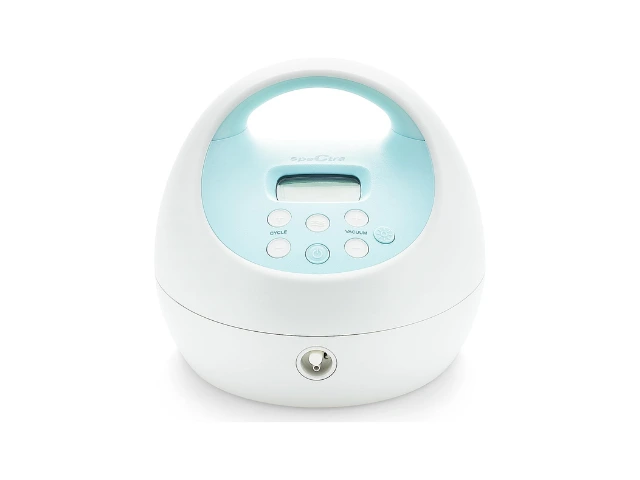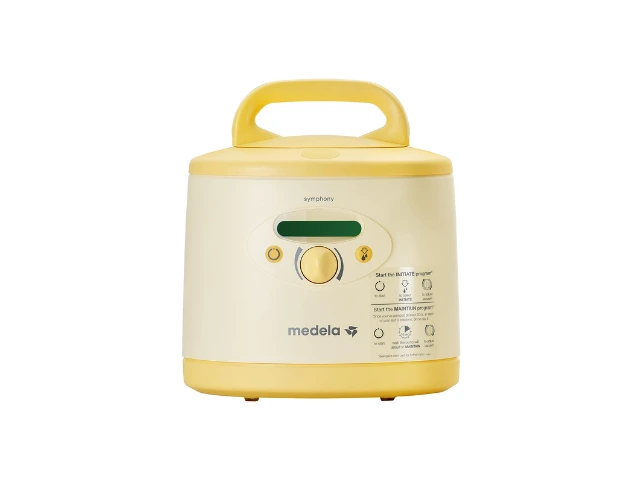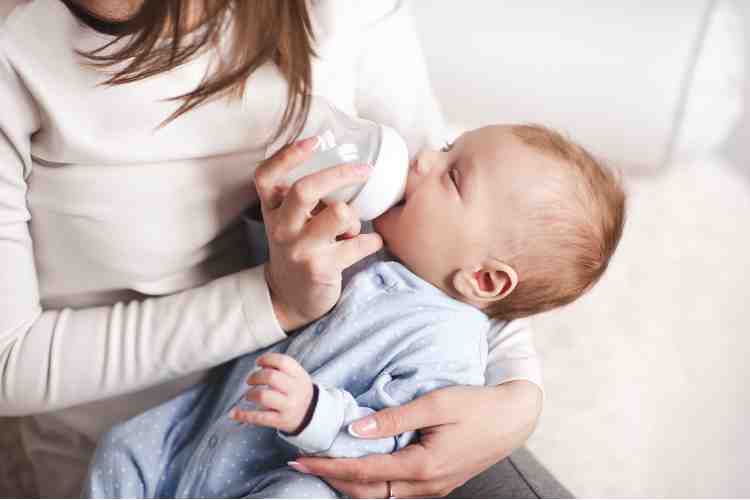Hospital-grade pumps are equipped with a powerful motor and have significantly improved suction strength, but is it the right one for you? Every mother’s breastfeeding journey is unique, and this article will help you choose the right breast pump for you and your baby’s needs.
What are the Different Types of Breast Pumps:
Before anything else, let’s review the different types of breast pumps and see the advantages that each has to offer:
Electric Breast Pumps
Electric breast pumps are either operated by battery or through a power outlet.
These pumps notably come in models that support single or double-breast expressing, allowing moms the opportunity to ease up or multitask. Given that these units are faster and have additional modes for automation, they’re most recommended for women who need to express milk regularly, including those who are working.
Manual Breast Pumps
Moms who don’t need to express that often will find more value in hand-operated or manual pumps.
In general, these personal use pumps are lightweight and budget-friendly, so they work well for occasional use or as a backup option. Their main limitation is that they can only be used for one breast at a time, and most units need one hand for support and operation.
Wearable Breast Pumps
As one can imagine, wearable breast pumps are compact, hands-free devices that fit inside a bra. They’re discreet and provide users with optimum mobility and flexibility. Moreover, some units already have smart technology integrated into them, giving you control over some functionalities and settings using another smart device. The main drawbacks are that they’re expensive and lack suction strength.
Hospital-Grade Breast Pumps
Hospital-grade breast pumps are best known for their high suction power. Hence, they operate much closer to the baby’s natural stimulation. This quality is perfect for moms who are still looking to establish a milk supply. They are often used in hospitals but can also be rented for home use.
What is a Hospital-Grade Breast Pump?
The FDA does not recognise “hospital-grade” when referring to breast pumps. So, breast pump manufacturers have different specifications and standards for their high-quality or high-performance variants. In general, however, these units are catered to moms who are establishing their breast milk supply and new moms who need to pump exclusively or frequently.
Hospital-grade breast pumps are more powerful and efficient than any other type of personal-use pumps, so you can expect shorter pumping sessions. On the other hand, they are also heavier and more expensive. You’ll also need a reputable partner when renting out a hospital-grade pump.
What’s the Difference Between Hospital-Grade Breast Pump vs Regular Breast Pump?

Hospital-grade pumps offer stronger suction than personal-use pumps. In addition, these high-powered units can be personalised through additional modes and settings. By and large, the former can provide more efficient and faster pumping sessions.
On the other hand, manual breast pumps are significantly more portable. Hospital-grade breast pumps are bulkier and heavier, likewise more expensive. Further, these units can be used by multiple users with separate accessory kits. Thus, it can be good for rentals and occasional sharing.
Do You Get More Milk with a Hospital-Grade Pump?
Mothers report that hospital-grade breast pumps are more proficient at emptying their breasts, which increases milk production and reduces the time they spend pumping.
The added power and extended range of settings also help stimulate milk flow closer to one’s preference and mimic a baby’s natural feeding pattern. However, individual results may vary depending on factors like pumping frequency, hydration, and overall health.
Tip: Explore our parenting blog for additional insights on motherhood and parenting your first child.
Is it Worth Renting a Hospital Grade Breast Pump?

Since these units can be twice as expensive compared to personal pumps, renting can be a cost-effective solution for moms who don’t want to make a sudden investment. Renting can also be a way to test how you feel about the unit itself before making a personal commitment.
How Long Should I Use a Hospital-Grade Pump?
The period of use depends on your specific requirements.
Some women use hospital-strength breast pumps for a few weeks to establish their milk supply, while others may take a month or two. You may seek advice from a lactation consultant to determine the best timeline for your situation.
Pros of Using Hospital-Grade Breast Pumps
Hospital-grade breast pumps aren’t just powerful, they’re also very durable—all that extra weight isn’t just for show! This makes them suitable for frequent and long-term applications. Hence, you can get so much value from this unit if you plan to pump for an extended period.
- Powerful suction power
- Efficient for long-term use
- Durable build
- Faster and more efficient pumping sessions
Aside from effectiveness, hospital-grade pumps are built to last and are known to increase milk supply upon frequent use. Even when purchasing a personal unit isn’t immediately an option, you can consider rental hospital-grade pumps to see how they fit your needs or preferences.
Cons of Using Hospital-Grade Breast Pumps
Hospital-grade pumps are expensive, though renting is an available option. These pumps are also notably larger in form, so they don’t qualify as portable pumps. Therefore, you may need to purchase a backup option for travel.
- Expensive
- Heavy and bulky compared to personal pumps
- Not portable
- May require additional accessories
While hospital-grade pumps can certainly make up for their out-of-pocket cost over time, it’s still a pretty big commitment to make upfront. Thankfully, there are many reputable partners online that can make it more accessible for new moms.
Best Hospital Grade Breast Pumps
Spectra S1 Plus Electric Breast Pump

Dimensions: 7.9 x 7.9 x 6.7 inches (20.1 x 20.1 x 17.0 cm)
Weight: 3.3 lbs. (1.5 kg)
Pros:
- Quiet operation.
- Rechargeable battery for portability.
- Adjustable suction and cycle settings.
- Hygienic design with a closed system to prevent milk from entering the tubing.
Cons:
- Slightly bulkier than other models.
- Accessories are sold separately.
- May require additional parts for optimal use.
Medela Symphony

Dimensions: 10 x 8 x 12 inches (25.4 x 20.3 x 30.5 cm)
Weight: 7.05 lbs. (3.2 kg)
Pros:
- Proven effectiveness in clinical settings.
- Easy to use and clean.
- Excellent for establishing milk supply.
- Programmable settings for personalized pumping sessions.
Cons:
- Expensive to purchase.
- Heavier and less portable.
Summary on Hospital Grade Breast Pump vs Regular Breast Pump
Choosing between a hospital-grade breast pump and a regular pump should come down to your individual parenting needs, budget, and lifestyle. If you need stronger performance over an extended period, then you’ll more likely find the most value in hospital-grade breast pumps. Otherwise, personal-use pumps should suffice for practical and everyday use.








